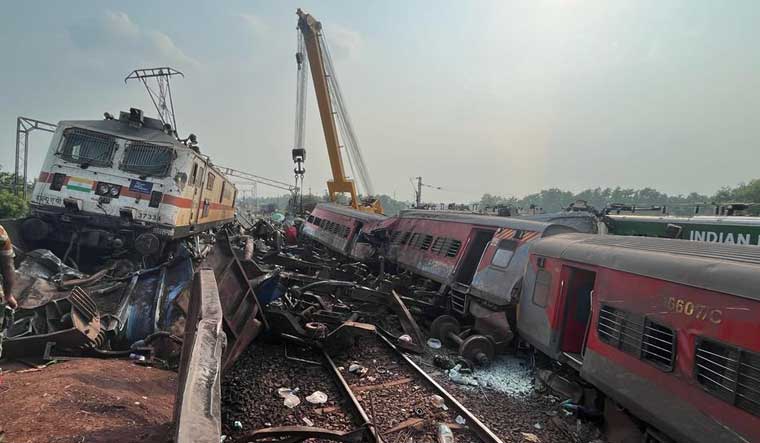A preliminary probe report by Railway officials after an on-the-spot observation on Saturday morning indicated that a faulty and malfunctioning equipment may be behind the tragic rail accident near the Bahanaga Bazar station yard in Odisha’s Balasore district on Friday evening.
The equipment in question is the Block Proving by Axle Counter (BPAC) system that ensures coordinated movement of trains by automatically indicating that the rail track section is clear and that it is safe for a train to enter into a particular rail line.
A source familiar with the development told THE WEEK: "Since the 12841 'Kolkata-Chennai' Koromandal Express Train did not have a stoppage at Bahanaga Bazar station, it was hurtling down at about 129 kmph on the main line. While the signal ahead showed green indicating all was clear, the driver realized a little bit late—as it was quite dark at 6:55 PM—that the train had automatically strayed into the loop line where a goods train had already derailed."
"While the signal was given and taken up for the main line, the train entered the loop-line and crashed onto the derailed goods train. In the meantime, the 12864 'Bengaluru-Howrah' Superfast Express was on the main line and crashed into the already derailed coaches, consequently derailing and capsizing two of its coaches."
In total, 21 coaches of the Koromandal Express were found to be derailed and a few others found capsized. Till last reports came in, at least 288 people had lost their lives. The death toll is expected to further rise as hundreds have been injured, some badly.
Broad Gauge lines in India are divided into six groups based on maximum permissible speeds. The top speed of up to 160 kmph is permitted on ‘A’ group. The rail track where the accident took place belongs to Group ‘B’ where the maximum speed limit is 130 kmph. So the Koromandal Express was within limits.
After running on the main line, guided by the BPAC, a train usually moves into the loop line near stations. And once it comes out from the station, it moves back from the loop line to the main line. The BPAC equipment is supplied by private vendors after being cleared by the Research Designs and Standards Organisation (RDSO).
Industry sources told THE WEEK that in many occasions, the BPAC comes fitted with substandard quality fitments that escape RDSO scrutiny resulting in the malfunctioning of the equipment.
It has also come to light now that less than four months ago, a similar rail tragedy was averted at the Hosadurga Road station of the Birur-Chikjajur section of the Mysore division. On February 8, at about 5:45 pm, the train driver of the 12649 Sampark Kranti Express noticed something seriously amiss with the line clearance indicated by the BPAC and stopped the train. If the driver had not stopped before entering the wrong line, it would have collided head to head with a goods train approaching the Hosadurga rail station.
The next day, the Principal Chief Operation Officer of the South Western Railways wrote to the Headquarters about the faults in the BPAC system. "There are serious flaws in the system where the route of despatch gets altered after a train starts on signals with correct appearance of route in the panel. This contravenes the essence and basic principles of inter-locking… The chain of incident started with BPAC failure and normal indication was not coming," the official wrote.
"The present incident must be viewed very seriously and immediate corrective actions are required to be taken to rectify the system faults," the railway official added.



